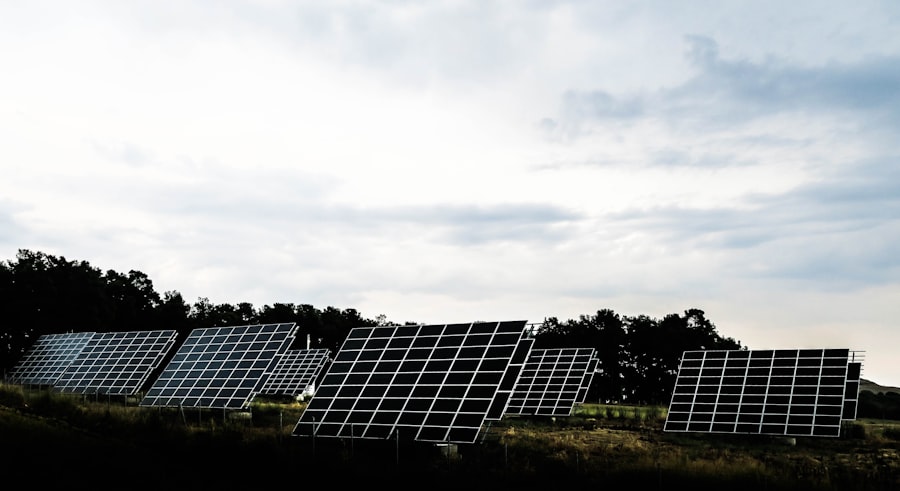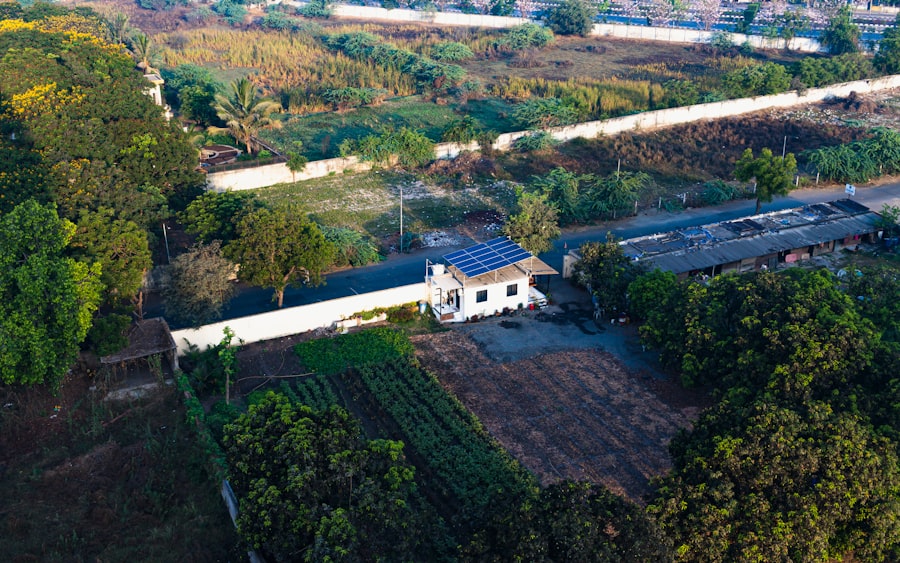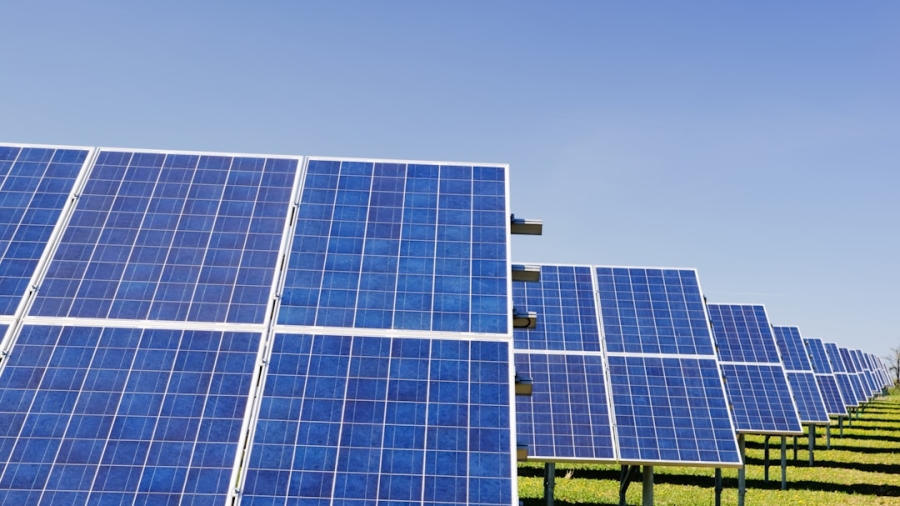The urgency of addressing climate change has never been more pronounced, with scientific consensus indicating that human activities, particularly the burning of fossil fuels, are the primary drivers of global warming. Renewable energy sources, such as solar, wind, hydroelectric, and geothermal, offer a viable pathway to mitigate these effects. By transitioning to renewable energy, we can significantly reduce greenhouse gas emissions, which are responsible for the rising global temperatures and the associated environmental impacts.
For instance, according to the International Energy Agency (IEA), a shift to renewables could help cut global carbon dioxide emissions by as much as 70% by 2050. This transition is not merely an environmental imperative; it is also an economic opportunity that can create jobs and stimulate growth in new sectors. Moreover, renewable energy contributes to energy security and independence.
Countries that rely heavily on imported fossil fuels are vulnerable to price volatility and supply disruptions. By investing in domestic renewable energy resources, nations can enhance their energy resilience and reduce their dependence on foreign oil and gas. For example, Germany’s Energiewende initiative has demonstrated how a comprehensive approach to renewable energy can lead to a significant reduction in fossil fuel consumption while fostering local industries and job creation.
The importance of renewable energy in combating climate change is thus multifaceted, encompassing environmental sustainability, economic stability, and energy security.
Key Takeaways
- Renewable energy is crucial in addressing climate change by reducing greenhouse gas emissions and mitigating the impact of global warming.
- Advancements in technology have made it more efficient and cost-effective to harness renewable energy sources such as solar, wind, and hydro power.
- Technology plays a key role in improving energy efficiency and storage, making renewable energy more reliable and accessible.
- Innovations in renewable energy infrastructure, such as smart grids and energy storage systems, are essential for integrating renewable energy sources into the existing energy grid.
- Tech solutions for monitoring and managing renewable energy systems are essential for optimizing performance and ensuring reliability.
Advancements in Technology for Harnessing Renewable Energy
Technological advancements have played a pivotal role in making renewable energy more accessible and efficient. Innovations in solar panel technology, such as the development of bifacial solar panels that capture sunlight from both sides, have increased energy generation efficiency. These panels can produce up to 30% more electricity than traditional models, making solar power a more attractive option for both residential and commercial applications.
Additionally, the cost of solar photovoltaic (PV) systems has plummeted over the past decade, driven by improvements in manufacturing processes and economies of scale. According to the National Renewable Energy Laboratory (NREL), the cost of utility-scale solar has decreased by over 80% since 2010, making it one of the most cost-effective sources of new electricity generation. Wind energy technology has also seen significant advancements.
The development of larger and more efficient wind turbines has allowed for greater energy capture even at lower wind speeds. For instance, offshore wind farms are now equipped with turbines that can reach heights of over 600 feet and generate upwards of 10 megawatts each. This increase in capacity is crucial for meeting the growing demand for clean energy.
Furthermore, innovations in turbine design and materials have improved durability and reduced maintenance costs, making wind energy a more reliable source of power. These technological advancements not only enhance the efficiency of renewable energy systems but also contribute to their competitiveness in the global energy market.
The Role of Tech in Improving Energy Efficiency and Storage

Energy efficiency is a critical component of the renewable energy landscape, as it maximizes the output from existing resources while minimizing waste. Smart technologies, such as smart meters and home energy management systems, enable consumers to monitor their energy usage in real-time and make informed decisions about their consumption patterns. For example, smart thermostats can learn user preferences and optimize heating and cooling schedules, leading to significant reductions in energy use.
According to the U.S. Department of Energy, implementing smart technologies can lead to energy savings of up to 20% in residential settings. Energy storage technologies are equally vital for enhancing the reliability of renewable energy sources.
As solar and wind power generation is inherently intermittent, effective storage solutions are necessary to ensure a consistent supply of electricity. Advances in battery technology, particularly lithium-ion batteries, have revolutionized energy storage capabilities. These batteries are now being deployed at both grid-scale and residential levels, allowing for the storage of excess energy generated during peak production times for use during periods of low generation.
For instance, Tesla’s Powerwall has gained popularity among homeowners seeking to store solar energy for nighttime use or during power outages. Additionally, research into alternative storage solutions, such as flow batteries and solid-state batteries, holds promise for further improving efficiency and reducing costs in the future.
Innovations in Renewable Energy Infrastructure
The infrastructure supporting renewable energy systems is undergoing significant transformation as new technologies emerge. One notable innovation is the development of floating solar farms, which utilize bodies of water to host solar panels. This approach not only maximizes land use but also reduces evaporation from water bodies and helps maintain cooler temperatures for the solar panels, thereby increasing their efficiency.
Countries like China and Japan have already implemented large-scale floating solar projects that demonstrate the potential for this innovative approach. Moreover, advancements in grid infrastructure are essential for accommodating the growing share of renewable energy sources. Smart grids equipped with advanced sensors and communication technologies enable real-time monitoring and management of electricity flows.
This capability allows for better integration of distributed energy resources (DERs), such as rooftop solar panels and community wind projects, into the existing grid system. For example, California’s grid operator has implemented a demand response program that incentivizes consumers to reduce their electricity usage during peak demand periods, thereby alleviating stress on the grid while maximizing the use of renewable resources. These innovations not only enhance the resilience of energy infrastructure but also facilitate a smoother transition toward a more sustainable energy future.
The Integration of Renewable Energy Sources into the Grid
Integrating renewable energy sources into the existing grid presents both challenges and opportunities. One major challenge is the variability associated with renewable generation; solar and wind power output can fluctuate based on weather conditions and time of day. To address this issue, grid operators are increasingly employing advanced forecasting techniques that utilize machine learning algorithms to predict generation patterns more accurately.
By anticipating fluctuations in renewable output, grid operators can better manage supply and demand dynamics. Another critical aspect of integration is the need for enhanced transmission infrastructure. As renewable energy projects are often located in remote areas with abundant natural resources—such as wind farms in rural regions or solar installations in deserts—upgrading transmission lines becomes essential for delivering this clean power to urban centers where demand is highest.
Projects like the TransWest Express Transmission Project in the United States aim to connect wind-rich areas in Wyoming with population centers in California, demonstrating how strategic investments in transmission infrastructure can facilitate the integration of renewables into the grid.
Tech Solutions for Monitoring and Managing Renewable Energy Systems

Advanced Analytics for Enhanced Decision-Making
Advanced software platforms equipped with artificial intelligence (AI) capabilities are increasingly being used to analyze data from various sources—such as weather forecasts, historical performance metrics, and real-time generation data—to enhance decision-making processes. For instance, predictive maintenance tools can analyze equipment performance data to identify potential issues before they lead to failures, thereby reducing downtime and maintenance costs.
Blockchain Technology for Decentralized Energy Systems
Blockchain technology is emerging as a promising solution for managing decentralized energy systems. By enabling peer-to-peer energy trading among consumers with rooftop solar panels or battery storage systems, blockchain can facilitate more efficient use of locally generated renewable energy.
Pioneering Projects in Blockchain-Based Energy Trading
Projects like Power Ledger in Australia are already piloting blockchain-based platforms that allow users to buy and sell excess solar power directly with their neighbors, creating a more resilient and decentralized energy ecosystem.
The Impact of Renewable Energy and Tech on Global Climate Goals
The intersection of renewable energy and technology plays a pivotal role in achieving global climate goals outlined in agreements such as the Paris Accord. By transitioning away from fossil fuels toward cleaner alternatives, countries can significantly reduce their carbon footprints while promoting sustainable economic growth. The United Nations Environment Programme (UNEP) emphasizes that achieving net-zero emissions by 2050 will require a rapid scale-up of renewable energy deployment alongside technological innovations that enhance efficiency and storage capabilities.
Moreover, investments in renewable energy technologies can drive economic development by creating jobs across various sectors—from manufacturing solar panels to installing wind turbines. According to a report by the International Renewable Energy Agency (IRENA), the renewable energy sector employed over 11 million people globally by 2018, with projections indicating continued growth as countries ramp up their clean energy initiatives. This dual benefit—addressing climate change while fostering economic resilience—highlights the critical importance of integrating renewable energy solutions into national policies aimed at meeting climate targets.
Future Trends and Challenges in Renewable Energy and Technology
Looking ahead, several trends are likely to shape the future landscape of renewable energy and technology. One significant trend is the increasing adoption of hybrid systems that combine multiple renewable sources with storage solutions to enhance reliability and efficiency. For example, integrating solar PV with battery storage allows for continuous power supply even when sunlight is not available, addressing one of the primary challenges associated with intermittent generation.
However, challenges remain that must be addressed to fully realize the potential of renewable energy technologies. Regulatory frameworks often lag behind technological advancements, creating barriers to deployment and integration into existing systems. Policymakers must work collaboratively with industry stakeholders to create supportive environments that encourage innovation while ensuring grid stability and reliability.
Additionally, public acceptance plays a crucial role in the successful implementation of renewable projects. Community engagement initiatives that educate citizens about the benefits of renewables can help alleviate concerns related to land use or visual impacts associated with large-scale installations. As society moves toward a more sustainable future powered by renewables, fostering public support will be essential for overcoming obstacles and achieving widespread adoption.
In conclusion, while significant progress has been made in harnessing renewable energy through technological advancements and innovative infrastructure solutions, ongoing efforts will be necessary to address challenges related to integration, regulation, and public acceptance. The path forward will require collaboration across sectors—government agencies, private industry, researchers, and communities—to create a sustainable energy future that benefits both people and the planet.
If you’re interested in understanding how technology can play a crucial role in addressing climate change, particularly through the use of renewable energy, you might find the article “The Best Tech Products 2023” insightful. It discusses various innovative technologies that could significantly impact our approach to sustainable energy solutions. You can read more about these technologies and their potential by visiting The Best Tech Products 2023. This article provides a comprehensive look at the latest advancements and how they could help in our transition to a more sustainable future.
FAQs
What is renewable energy?
Renewable energy is energy that is collected from renewable resources, which are naturally replenished on a human timescale, such as sunlight, wind, rain, tides, waves, and geothermal heat.
What are the benefits of renewable energy?
Renewable energy sources produce little to no greenhouse gases or other pollutants, reducing overall air pollution and contributing to a cleaner environment. They also help to reduce dependence on fossil fuels and create jobs in the renewable energy sector.
How does technology play a role in climate solutions?
Technology plays a crucial role in climate solutions by enabling the development and implementation of renewable energy sources, energy-efficient technologies, and carbon capture and storage solutions. It also helps in monitoring and managing energy consumption and emissions.
What are some examples of renewable energy technologies?
Examples of renewable energy technologies include solar panels for capturing sunlight and converting it into electricity, wind turbines for harnessing wind energy, hydroelectric power plants for generating electricity from flowing water, and geothermal power plants for utilizing heat from the Earth’s core.
How can renewable energy and technology help combat climate change?
Renewable energy and technology can help combat climate change by reducing greenhouse gas emissions, decreasing reliance on fossil fuels, and promoting sustainable energy production and consumption. This can contribute to mitigating the impacts of climate change and transitioning to a low-carbon economy.


